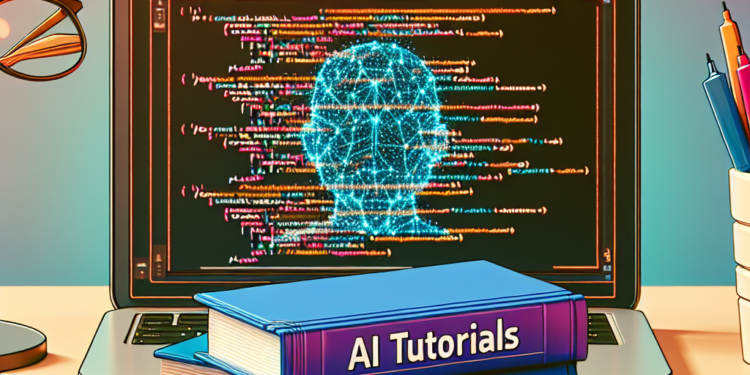Artificial Intelligence (AI) is a rapidly growing field that is revolutionizing many industries. From self-driving cars to virtual assistants, AI is changing the way we interact with technology. For new learners interested in diving into the world of AI, there are many tutorials available to help you get started. In this article, we will explore some of the essential AI tutorials for new learners to help you build a strong foundation in this exciting and cutting-edge field.
One of the first tutorials that new learners should explore is an introduction to AI. This tutorial will give you a basic understanding of what AI is, how it works, and its different applications. You will learn about the fundamental concepts of AI, such as machine learning, neural networks, and deep learning. This tutorial will also introduce you to some of the key terms and terminology used in the field of AI, so you can start to familiarize yourself with the language of AI.
After you have a basic understanding of AI, the next tutorial you should explore is machine learning. Machine learning is a subset of AI that focuses on algorithms that can learn from data and make predictions or decisions. In this tutorial, you will learn about different types of machine learning algorithms, such as supervised learning, unsupervised learning, and reinforcement learning. You will also learn how to train and evaluate machine learning models, as well as how to use popular machine learning libraries like scikit-learn and TensorFlow.
Once you have a solid understanding of machine learning, you can move on to neural networks. Neural networks are a type of machine learning model that is inspired by the way the human brain works. In this tutorial, you will learn about the basic architecture of neural networks, including layers, neurons, and activation functions. You will also learn how to build and train neural networks using popular libraries like Keras and PyTorch. This tutorial will give you a deep understanding of neural networks and how they can be used to solve complex problems in AI.
After mastering neural networks, you can move on to deep learning. Deep learning is a subset of machine learning that focuses on building and training deep neural networks with many layers. In this tutorial, you will learn about popular deep learning architectures like convolutional neural networks (CNNs) and recurrent neural networks (RNNs). You will also learn about advanced topics in deep learning, such as transfer learning, generative adversarial networks (GANs), and natural language processing (NLP). This tutorial will give you the skills to work on cutting-edge AI projects and research.
Another essential tutorial for new learners is reinforcement learning. Reinforcement learning is a type of machine learning that focuses on learning how to make decisions by trial and error. In this tutorial, you will learn about the reinforcement learning framework, including rewards, policies, and value functions. You will also learn how to implement reinforcement learning algorithms, such as Q-learning and deep Q-learning, using popular libraries like OpenAI Gym and TensorFlow. This tutorial will give you the skills to build AI systems that can learn to play games, control robots, and make decisions in complex environments.
In addition to these core tutorials, new learners should also explore tutorials on data preprocessing and feature engineering. Data preprocessing is the process of cleaning and transforming raw data into a format that can be used by machine learning algorithms. In this tutorial, you will learn about techniques for handling missing data, encoding categorical variables, scaling features, and more. Feature engineering is the process of creating new features from existing data to improve the performance of machine learning models. In this tutorial, you will learn about different feature engineering techniques, such as polynomial features, interaction terms, and feature selection.
Once you have a strong foundation in AI and machine learning, you can start to explore tutorials on specific applications of AI. For example, you can learn about computer vision, which is a field of AI that focuses on building systems that can analyze and interpret visual data. In this tutorial, you will learn about popular computer vision techniques, such as image classification, object detection, and image segmentation. You will also learn how to build computer vision models using popular libraries like OpenCV and TensorFlow.
Another exciting application of AI is natural language processing (NLP), which focuses on building systems that can understand and generate human language. In this tutorial, you will learn about popular NLP techniques, such as text classification, sentiment analysis, and named entity recognition. You will also learn how to build NLP models using popular libraries like NLTK and spaCy. This tutorial will give you the skills to work on projects in chatbots, language translation, and text analysis.
In conclusion, there are many essential AI tutorials for new learners to explore to build a strong foundation in this exciting field. From basic concepts like machine learning and neural networks to advanced topics like deep learning and reinforcement learning, these tutorials will give you the skills and knowledge you need to start working on AI projects and research. By following these tutorials, you can become a proficient AI practitioner and contribute to the growing field of artificial intelligence.













